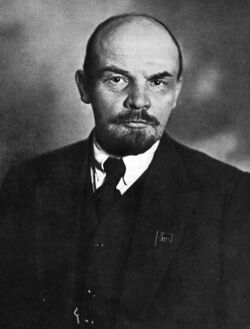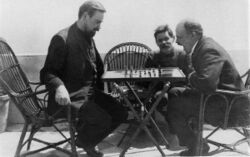How did Vladimir Lenin Rise To Power
In 1917, Vladimir Ilyich Ulyanov (alias Lenin) seized Russia's control in the aftermath of the Russian Revolution, created the Soviet Union, and ruled it until his death in 1924. Lenin was one of the leading political figures in the 20th century. He was the revolutionary thinker behind the USSR idea (a.k.a. The Great Soviet Union), fought to materialize it, and masterminded the Bolshevik bloody takeover of power in Russia after Russia's withdrawal from World War One. Lenin's reign as the head of the newly created Soviet Union was brief, but his influence stretched throughout the 20th century.
How did Lenin become a Marxist?
Vladimir Ilyich Ulyanov was born on 22 April 1870 in Simbirsk on the Volga River into a well-educated family. He excelled at school and chose to pursue law studies and a career. However, while he was at university, Aleksandr Ulyanov was involved with “Narodovoltsy” – a revolutionary terrorist society. In 1891, he was arrested and executed for taking part in an assassination plot against Tsar Alexander III. His brother's execution radicalized Vladimir. He turned his anger towards =the ruling Tsarist regime. His brother's execution, along with his father’s death, marked a turning point in his life and shaped his path in the future.
Soon after his brother's execution, Lenin was expelled from the university to participate in student protests against the Tsarist regime. He was forced to continue his law studies as an external student at St. Petersburg University. Around this time, he also became passionately interested in Karl Marx’s works. He joined Marxist groups when he was 21 and, in essence, became a professional revolutionary. Lenin became involved with various Marxist societies and radical groups and published his writings on politics and Marxism.
Almost all of his writing was immediately banned and restricted by the Tsarist regime. The only way to get a hold of his writings was to pass them by hand from person to person. His writings quickly caught the eye of other Russian radicals, and he was declared an “enemy of the state” by the Russian police. Tsarists police arrested him in St. Petersburg and imprisoned him for a year for sedition. After his release, he was again arrested in 1897 for his radical views and ideas and sent to exile in Siberia for three years. Lenin and their family were sent to Siberia, where he lived in Shushenskoye. During his Siberian exile, Vladimir adopted the famous moniker “Lenin.” While in Siberia, Lenin regularly wrote with his wife, Nadezhda Krupskaya. His exile did little to damper his revolutionary zeal.
Why did Lenin leave Russia?
Once Lenin was released, he continued to work on his views regarding social imbalance passionately and formed the Bolsheviks. The Bolsheviks would become the preeminent party of Russian Marxists shaped the future Communist Party.[1] The synthesis of Lenin’s views combined with those of Karl Marx created what we now know as “Marxism-Leninism” or the basis of whole Communist doctrine throughout the 20th century.
His teachings attracted more and more passionate followers. Unsurprisingly, his writing unpopular with the Russian authorities. Vladimir argued in favor of total state ownership of all property, abolishing Tsarists privileges, equal rights for all, and eliminating unemployment. As the tension grew, Lenin decided to leave the country for security reasons and move to Western Europe. He spent there most of the subsequent 15 in self-imposed exile. After his move to Eastern Europe, he became a prominent member of the international revolutionary movement.
Away from Russia, he continued to publish and won more followers on his side. He published his newspaper “Iskra” (“Spark”) in Munich with the motto “From Spark to Flame!” Aided by foreign funds, Lenin actively challenged the ruling Tsarist regimes' doctrine, policy, and institution.
Why did World War I weaken the Romanov Regieme?
In 1917, exhausted by World War One, Tsarist Russia was a wreck. It was the perfect chaotic moment for Lenin to return home. Germany, in an attempt to destabilize Russia, sent Lenin back to Russia. They hoped Lenin would undermine the Russian war efforts. Instead of being arrested and exiled again, Lenin was welcomed home and supported by other radical thinkers such as Leon Trotsky. He quickly became the Marxist movement leader and led the Bolsheviks in the bloody, violent Red October Revolution. Lenin, much to his surprise, effectively ended the Russian Empire rather easily and established the Soviet state. The Romanov Dynasty had become brittle and incredibly unpopular and Russians were willing to embrace Lenin's revolution.
In the following three years of civil war, the Bolsheviks successfully assumed total control of Russia. Lenin acted as the first head of this new socialistic regime and was the USSR architect. Lenin also commanded and led the famous Red Army - established immediately after the 1917 October Revolution. [2]
Lenin proved decisive and ruthless from the very beginning. He neglected his fellow countrymen's sufferings because he was focused on crushing any internal opposition or riots. The Red Army or as it was also commonly referred to - The Great Workers’ and Peasants’ Red Army - was raised by Lenin’s Bolsheviks to oppose the various military collectively known as the White army during the Russian Civil War. After 1922, the Red Army was transformed into the Army of the Union of Soviet Socialist Republics by the new regime.
Did Lenin create a Cult of Personality?
Lenin was a powerful and gifted orator. From an early age, Vladimir was capable of effectively communicating complicated concepts and ideas to his audience. Lenin could effectively communicate with Russians who had limited education. Unfortunately, Lenin was more interested in building a country around his persona instead of improving Russian citizens' lives. Lenin was fairly ruthless with any opposition to his rule. Millions of free-will poets, philosophers, or priests lost their lives or were forced to emigrate. The orthodox church was almost entirely banned.
Lenin’s authoritarian regime generated opposition, and he narrowly survived a few assassination attempts. In one of these attempts, Lenin was severely wounded, and his long-term health was affected. Lenin's injury and workaholic nature eroded his health. In May 1922, he suffered a stroke from which he never fully recovered. He lost his power of speech, and his right arm and leg were paralyzed. In December, he had another stroke. The third followed in March 1923 and turned him into a living corpse. Lenin died on 24 January 1924. His body was embalmed and emblematically placed in a mausoleum on Moscow's Red Square. St Petersburg was renamed Leningrad in his honor.
How did Lenin become the leader of the Soviet Union?
Lenin transformed himself from an imprisoned radical to an absolute ruler in three decades. Lenin's shadow hung over the Soviet Union and Europe for another 70 years. While Lenin was a remarkable orator and writer, his takeover of Russia was a fluke. In 1917, the Russian Empire was a disaster. It was led by the Romanov's who were unpopular, foolish, and incompetent. World War I had also fatally weakened the Russian Empire. Lenin's revolution would have been quickly snuffed out if it had occurred at any other time in Russian history. Lenin's timing could not have been better. Lenin's luck allowed him to become the first revolutionary dictator of the century with global influence.
Related DailyHistory.org Articles
- Why did Germany lose the Battle of Stalingrad
- What were Joseph Stalin's goals as World War Two ended
- Why was the Berlin Airlift of 1948-49 successful
- What Are the Origins of Medieval Kyiv
- Why did the Allies struggle to resolve any meaningful issues at the Potsdam Conference in 1945
- Who was the first American diplomat to meet with Lenin
- How did the Carter Administration react to the Soviet Union invasion of Afghanistan in 1978
- Why did the Soviet Union create the Warsaw Pact in 1955
- Why did the Soviet Union invade Czechoslovakia in 1968
- What Happened to the Volga German Colonies in Russia
- What happened at the "Big Three" conferences between the Allies during World War II
- Why did the United States ally with the Soviet Union during World War II
- How did the Kennedy Administration avoid war with the Soviet Union during the Cuban Missile Crisis
- How did the United States and USSR react to the Francis Gary Powers U2 incident
- Why was the United States concerned by the launch of Sputnik in 1957
- Why did the United States diplomatically recognize the Soviet Union in 1933
References
Updated November 30, 2020



